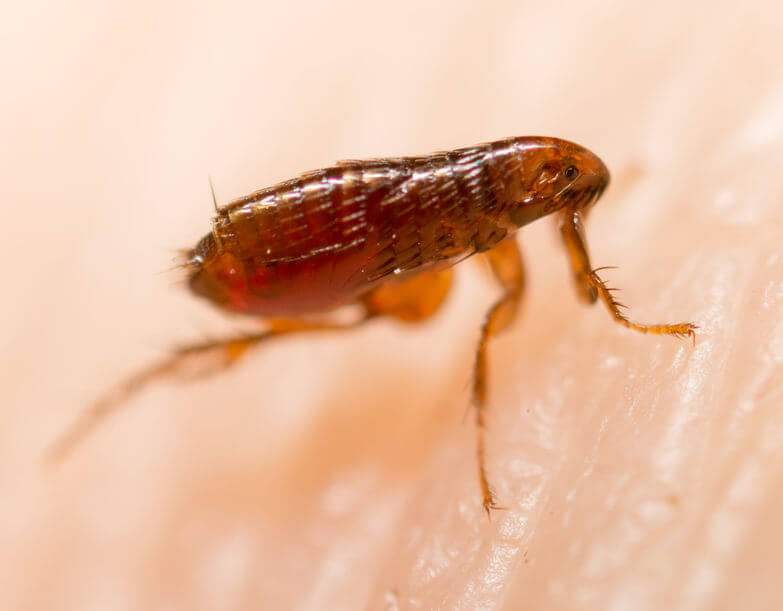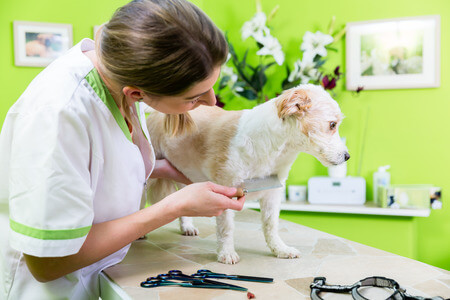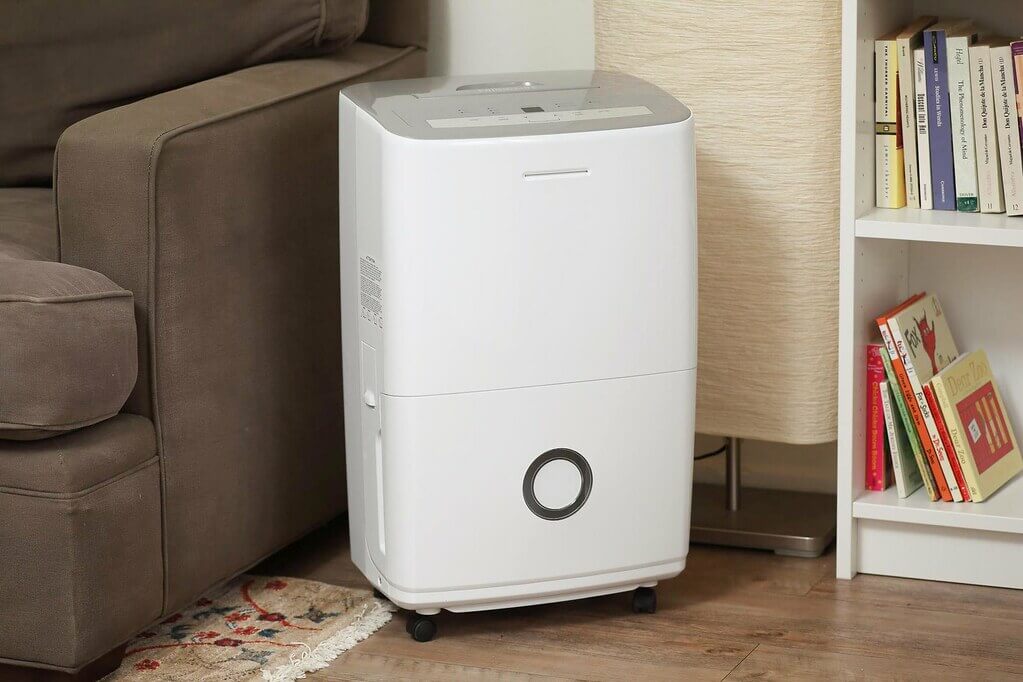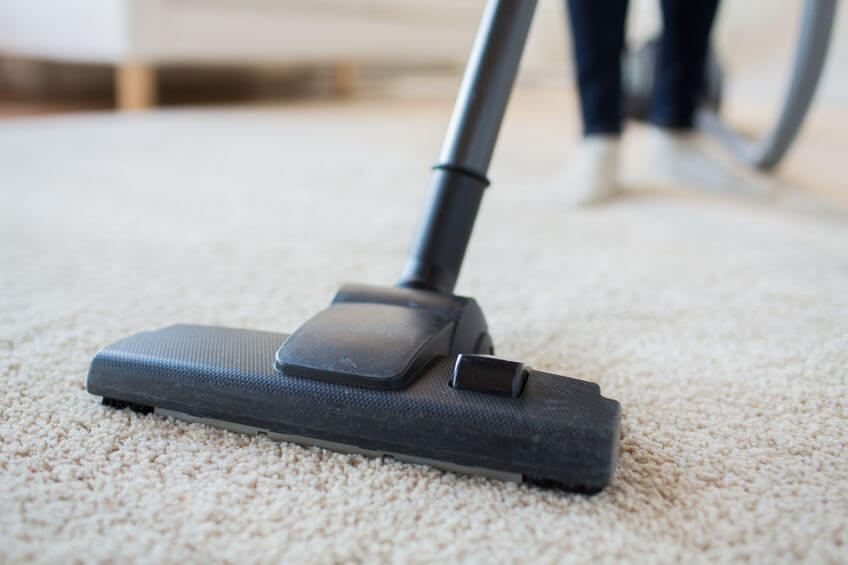Flea Treatment Side Effects
This post may contain affiliate links so I earn a commission.
Flea treatment side effects are not something that is usually thought about related to humans.
In recent years there has been an overwhelming amount of information about the damaging side effects that flea and tick treatments have on our pets.
Those same treatments, whether environmental or topical can potentially have a damaging effect on the health of humans as well.
This June 4 1999 periodical from the CDC outlines some of the hazards associated with occupational exposure to flea and tick treatments.
While the likelihood of health problems is considered to be low, it is possible that this is because there are relatively few patients who indicate this as the cause of their illness.
Flea Treatment Side Effects - The Dangers
There are many reported cases of flea treatment side effects in animals after a flea treatment.
Originally, it seems many of these issues were seen as behavioral issues brought on by the acute stress of visiting the vet or the groomers.

Over time though it has become apparent that some of these treatments were causing skin irritations, and more serious neurological conditions like tremors and seizures.
There has always been warnings on package inserts recommending that people not expose themselves to topical flea treatments for some time after application to your pet.
Flea and insect chemical sprays like Raid are known to have the potential to cause neurological and reproductive damage to humans.
These chemicals have the potential to damage the same neural tissue in humans and their pets as it does in insects.
Our only protection is our size and ability to absorb far more chemicals than insects before it starts doing long term irreversible damage.
Preventing A Flea Infestation - Flea Treatment Side Effects
Oral flea treatments have become increasingly popular as a way to protect pets against fleas.
While they may be less dangerous to people, they do not seem to be any safer for animals, with similar neurological side effects to the monthly topical treatments as well as digestive problems and lethargy.

Convenience often comes at a price, and it seems that the price you pay in this case is gambling with your families health.
What can you do if you live somewhere where your animals are going to pick up fleas, or worse somewhere where it is so infested outside that fleas migrate into your home?
Understanding fleas and their habits can help you to be better prepared to keep them out of your home.
Getting Rid Of Fleas - Flea Lifecycle
Fleas need specific things in their environment to breed and develop.
If you have pets you need to check them for fleas regularly.
Keeping them and their sleeping areas clean and dry is an important start.
This helps to ensure that when adult fleas do make their way into your home, that they cannot reproduce successfully.
Without moisture and warmth all but adult fleas will quickly die.
While keeping your house below 50% humidity can be difficult some seasons, it is possible with the use of dehumidifiers and air conditioners.

While this might seem like a high price to pay to rid your home of fleas, it also protects you and your home from the development of mold and fungus which can have a serious effect on your health and a destructive effect on your home.
It is important to remember that there are products you can use and even make yourself which will help to reduce or eliminate fleas in your home.
I always run a dehumidifier in my basement during the wet and humid summer months.
It's amazing how fast a basement can become wet with a humidity level well over 50%.
Do yourself a favor and invest in a good quality humidifier.
I've been using two Frigidaire units for the last 10 years and they're fantastic!
Essential oils of Geranium and Rosemary both are known to be knockdown killers of most insects, as well as repellents.
Other essential oils such as lemongrass and clove oil are known to repel biting insects and in the case of clove kill scabies and other mites.

While these may not solve your flea problems, when used with other methods like reducing humidity they are a strong tool.
It should be noted that pets are not able to easily metabolize essential oils breathed in or absorbed through their skin like humans are, so an effort should be made to reduce their exposure when possible.
Having strong tools to protect your house from fleas is important if you want to avoid flea treatment side effects.
Although it may seem like a lot of work these non-toxic methods can easily be integrated into your household routine.
In the long run it will save you both time and money when compared to the potential for serious health problems developing in your household.
It is also important to remember that topical and oral flea treatments are not designed to kill adult fleas, it only prevents them reproducing.
It does not stop your pet from picking up fleas outdoors and bringing them in, or adult fleas migrating into your living environment.

The only thing that will protect you there is creating an inhospitable environment for fleas in your home.
This does not need to be done year round most places, and even in the worst areas for fleas in temperate climates it usually only take about a month of diligence to avoid any problems.
Flea Treatment Side Effects - Overall
On my farm in New England it has been a particularly wet winter and spring.
I know from experience that this is the type of weather that can make outside flea populations soar in the Green Mountain Foothills.
Since the weather has been cool, I have started using my dehumidifiers in areas I know tend to stay damp.
I have lived here long enough to know when the problems tend to start, I simply get ahead of them without having to use any chemicals or medications that can have a negative effect on the health of my family and household.
If you are conscious about your living environment it really is easy to avoid flea treatment side effects by practicing avoidance.
Avoid those products that are known to cause health problems.
Avoid the dangers that come from not knowing your enemy in this case flea, by focusing on creating a living environment that supports health and well-being.
Then you also create an environment that is not hospitable to pathogen carriers.



